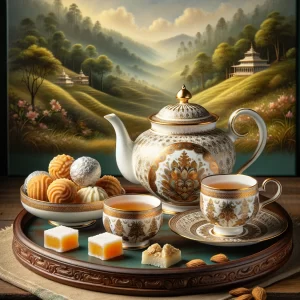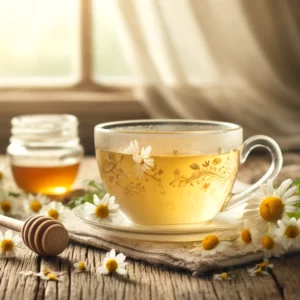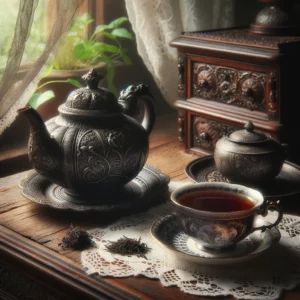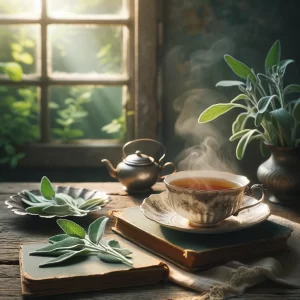Darjeeling White Tea is like a whisper of a cool breeze on a warm summer day—gentle, refreshing, and utterly delightful. Harvested in the serene hills of Darjeeling, India, this tea is a treasure for those who appreciate the subtler things in life. With its light, sweet flavor and floral undertones, Darjeeling White Tea invites us on a journey of tranquility and refinement. In this comprehensive guide, we’ll explore the essence of Darjeeling White Tea, from its rich history and unique characteristics to the art of brewing the perfect cup. Whether you’re a seasoned tea lover or new to the world of tea, this guide promises a deeper understanding and appreciation of this exquisite variety.
Table of Contents
- The Origins and History
- What Makes Darjeeling White Tea Special?
- Brewing the Perfect Cup
- Ways to Enjoy Darjeeling White Tea
- The Best Pairings for Darjeeling White Tea
- Where to Find Darjeeling White Tea and Storage Tips
- Cultivation and Processing
- Conclusion
The Origins and History
Discovering Darjeeling White Tea
Darjeeling, a picturesque town nestled in the Himalayas of India, is often called the “Champagne of Teas” world. It’s here, amid misty mountains and lush estates, that Darjeeling White Tea was born. Unlike other teas, Darjeeling White Tea’s story is not just about a place but also about the meticulous process that brings out its delicate flavors. Initially enjoyed by local connoisseurs, it gained international fame for its unique taste and rarity.
A Journey from Obscurity to Fame
The history of Darjeeling tea dates back to the 19th century, but white tea varieties from this region gained prominence much later. Their evolution reflects a growing appreciation for subtlety and sophistication in tea drinking globally. As demand grew, so did the interest in understanding and preserving the unique qualities of this tea.
What Makes Darjeeling White Tea Special?
A Symphony of Flavors and Aromas
What sets Darjeeling White Tea apart is its flavor profile: a delicate blend of sweetness, floral notes, and a hint of muscatel. This tea is lighter than its green or black counterparts, making it a favorite for those seeking a subtle yet flavorful experience.
Rare and Exquisite
Another factor contributing to its special status is the limited production. Darjeeling White Tea is made from the youngest and most delicate leaves, plucked in the early spring. This limited harvest period adds to its exclusivity and allure.
Brewing the Perfect Cup
Brewing Darjeeling White Tea is an art that requires attention and care to preserve its delicate flavors. Here’s how to do it right:
- Water Temperature: Use water just before it reaches boiling (about 85°C or 185°F) to avoid scorching the leaves.
- Steeping Time: Infuse the leaves for 3 to 5 minutes. Longer steeping can extract bitterness.
- Loose Leaf Over Bagged: Opt for loose leaf tea to experience the full depth of flavor.
Ways to Enjoy Darjeeling White Tea
Darjeeling White Tea is versatile. Here are a few ways to enjoy it:
- Plain: Savor its natural sweetness and aroma.
- With a Twist: Add a slice of lemon or a dab of honey to enhance its flavors.
- In Recipes: Use it in tea-infused desserts or smoothies for a creative twist.
The Best Pairings for Darjeeling White Tea
To complement its delicate flavors, pair Darjeeling White Tea with:
- Light Pastries: Like scones or macarons.
- Fruit Salads: Especially those with berries or peaches.
- Mild Cheeses: Such as Brie or Camembert.
Where to Find Darjeeling White Tea and Storage Tips
Finding the Best Leaves
Look for reputable tea shops or online stores specializing in high-quality Darjeeling teas. When selecting, pay attention to the harvest date and estate to ensure freshness.
Storage Know-How
Store your tea in a cool, dark place in an airtight container to maintain its flavor and freshness.
Cultivation and Processing
A Labor of Love
Darjeeling White Tea’s exceptional quality begins in the fields, where careful cultivation ensures the health and vitality of the tea bushes. The young leaves and buds are handpicked with precision, a testament to the skill and dedication of the workers.
The Art of Processing
The leaves undergo minimal processing—withering and drying—to retain their natural flavors. This gentle handling is crucial to developing the tea’s signature aroma and taste.
Conclusion
Darjeeling White Tea is more than just a beverage; it’s an experience. With its delicate flavors, rich history, and the careful craftsmanship that goes into its production, it invites us to slow down and savor the moment. Whether you’re enjoying a quiet morning or sharing a special afternoon with friends, Darjeeling White Tea offers a sip of serenity and sophistication. We encourage you to explore this exquisite tea and discover the myriad ways it can enhance your daily rituals and special occasions.
“As an Amazon Associate I earn from qualifying purchases.”
[azonpress template=”grid” asin=”B0932MWTWG,B0DNFGVH71″]



